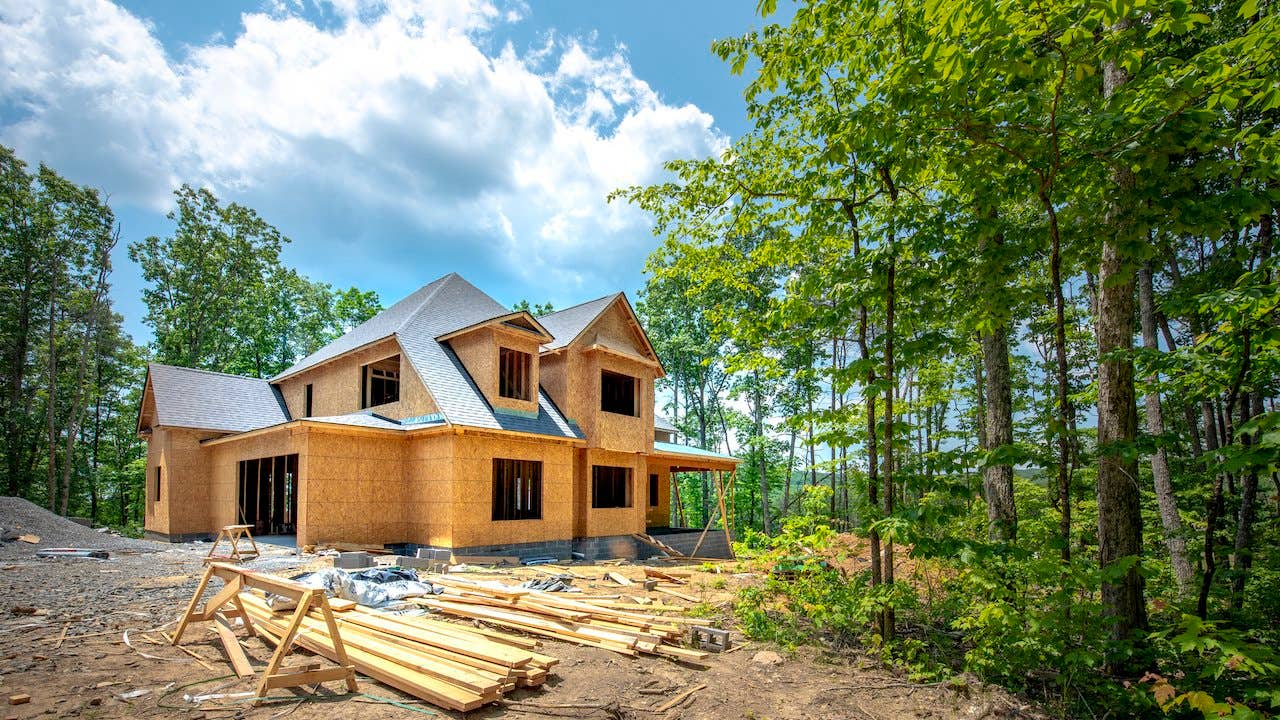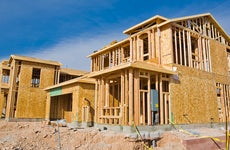How to buy land to build your dream house on

The Bankrate promise
At Bankrate we strive to help you make smarter financial decisions. While we adhere to strict , this post may contain references to products from our partners. Here's an explanation for .
Maybe you’ve always dreamed of building your own home. Or maybe you’re frustrated by the lack of inventory in the housing market, and are considering building a house from scratch. You’re certainly not alone — more than 1.8 million building permits for new-construction residences were issued in March of 2022, according to data from the U.S. Census Bureau and U.S. Department of Housing and Urban Development. That’s 6.7 percent higher than in March 2021.
But of course, if you’re going to build a house, you need a place to build it. Where do you start when you’re ready to take that first step? Buying land. Here’s everything to know about buying land to build your dream house on.
How to find the right lot
Finding the right piece of land to build a home on is a challenging task. How do you find a lot that’s in a good location and that fits your budget? Simply driving around looking for signs, or searching online for “land for sale,” can sometimes be effective (and fun, too). And if you’re interested in a new-build development or master-planned community, plots of land may come part-and-parcel with a home purchase — in some instances, you may even be able to buy the land and build your own home on it. But if you’re looking for raw land to build on from scratch, the best way is to work with a real estate agent who specializes in land sales.
The Realtors Land Institute is a good place to start — the organization’s website offers listings as well as a search tool that can help you find an accredited land expert in your area. You can also look for local agents with the letters ALC after their name, which means they have earned the Accredited Land Consultant designation. Make sure any expert you work with knows what your must-haves are in terms of location and scope of building — especially if it requires finding something specific, like a water or mountain view. (When buying for a view, ask your agent to investigate whether there’s any future development planned that might block it.)
Other options include buying a teardown house for the land, or looking for homes on very large lots that could be subdivided and contacting the owners to see if they are interested in selling you a part of their land.
What to consider before buying
It’s important to take your lifestyle into account when you’re buying land. After all, this lot will be the foundation of your home — and will represent a big chunk of your total expenses, typically 25 to 35 percent of your final home value. Here are some crucial factors to consider before you make an offer:
Zoning
Building from scratch is already complicated enough, so start with the basics: You can’t build your dream home on land that isn’t zoned for residential use. Some land may have complicated legal protections in place as well. A local agent can help you understand the zoning in your area and make sure you’re not wasting time looking at land that can’t be used for your purposes.
Common restrictions include maximum lot coverage and elevation, limitations on accessory structures and minimum and maximum building area. If possible, it’s helpful to work with an architect who can create a 3D model of what your dream house will look like on the lot, so you can see the impact of the zoning and land-use regulations.
Size
Be sure to look for the right dimensions for your needs. If you have a large family, for example, or want plenty of space to host guests or entertain, you will want a large lot. Even if you plan to build a smaller home, you may want an expansive lawn and garden — especially if you enjoy spending time outdoors.
However, a large lot can come with additional expenses. For example, you’ll likely need to pay more for landscaping and watering, which could eat up a lot of your budget. If you are a serious gardener, you may want to have a soil analysis done to see if you will be able to grow everything you want to.
Privacy
Another key consideration when buying land is the level of privacy you want. If you don’t want to be seen by neighbors or passersby, you’ll want to look for a property that’s secluded, away from busy roads and foot traffic. Natural barriers are useful as well: Trees, bushes, and water, like ponds or creeks, can all help to provide privacy. If you’re looking at a property with a stream or pond on it, be sure to check into any possible regulations and whether it is in a conservation or watershed area or prone to flooding.
Utilities
When you’re looking at a lot, ask about the utility services in the area. If it’s in a fairly populated region — or part of a new development or master-planned community — it will likely already have access to the necessary utility services. In rural areas, though, you may need to have electricity, water and sewage lines (or a septic tank) hooked up to the property. The cost of connecting to utility services can be a substantial part of your overall purchase. Check to see if there are any moratoriums in place, and make sure the lot is big enough to meet your needs if you will be installing a septic system or drilling a well.
In some cases, you may need to get a permit from the local utility provider. If that’s the case, you may not be able to finalize the sale until the water and electric companies have completed their work.
Accessibility
Your dream home lot won’t do you any good if it’s unreachable. Land purchases most often take place outside a city, which can mean long drives and rural roads. Consider how you’ll be accessing the property and whether it requires building an access road or a driveway, which can be a significant expense — especially if it requires an easement. Don’t forget to factor in gas costs and commute times, as well.
Ecology
Anytime you want to build on a property, it’s important to consider potential environmental concerns. Some land, particularly in rural areas, might have conservation requirements that limit what may be built there. You may want to have the soil tested and water table checked as well, as both affect whether the land is appropriate for building.
In addition, there may be limitations on building based on the slope of the property, or on tree removal and/or replacement (especially in heavily wooded areas). Consider hiring an experienced property surveyor to investigate the land rights and restrictions with respect to natural resources.
Financing a land purchase
Lenders often charge more to finance vacant land than they would to finance a home — it’s riskier, since more can go wrong. So if you are able to, the best way to buy land is probably paying cash.
Barring that, of course, there are many different ways to finance a land purchase. One of the most common is through local banks or credit unions, which know the area well and may be more likely to offer local land loans than large national institutions would. If the home you plan to build will be your primary residence and you’re looking in a fairly rural area, you may be eligible for a government-sponsored USDA loan.
As with any home financing, you’ll want to shop around for the best rates and get preapproved before making any offers.
Getting the land ready to build on
In most places, you’ll need to get a building permit or permission from the city or county in order to build on the land you buy. Find out whether this will be the case for your property, and make sure that the permit is in place before you begin.
Before you even begin to plot the blueprints of your new home, you will have to first clear the land of any natural obstacles that could interfere with construction. A professional tree service can remove trees and brush — they should know the local regulations to do so — especially if they are too big or too close to where the house will be built. Deadfall and debris can often be cleared with a chainsaw, or a commercial stump grinder may be needed.
You’ll also need to eliminate any potential hazards, like wires or pipes. You will want to enlist the help of local utility companies to ensure that you don’t damage any existing infrastructure while you are clearing the land, as you will likely be liable for the damage if you do. Get the property insured for liability as soon as you are in contract.
Depending on the size of your property, you may also have to have it surveyed to determine the boundaries of your property lines. The cost to have a survey performed will vary by location and the size of the property, but marking the legal boundaries of your new property now can save you considerable grief in the future. Surveyors may also work with your builders to make sure the land is properly leveled before building can begin.
Bottom line
As with just about any real estate purchase, it’s critical to do your research before you buy land to build a house on. Home construction comes with its own set of headaches — and expenses — so making sure the land is in order first gives you a great head start. Working with a pro who can lead you through the process, including potentially complex permitting and zoning issues, is also essential.
Related Articles



